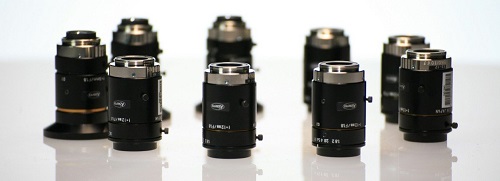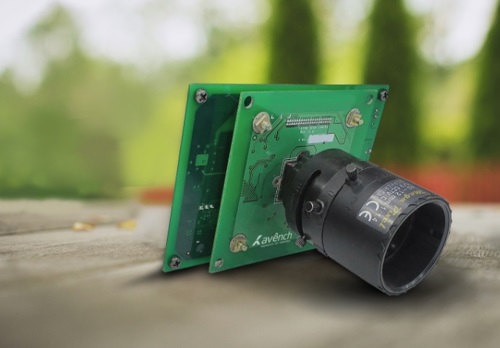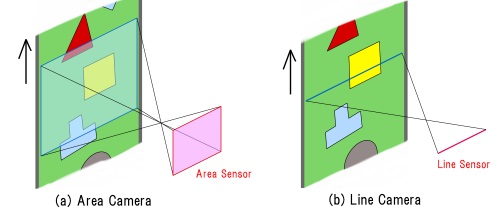Ever wondered what line scan cameras are? Here is a brief guide to everything you need to know about these specific cameras used for capturing close details for controlling and detecting defects or other specific details in high speed and continuous processes.
Imagine a conveyor line where an endless sheet of steel or textile is being transported during its production process. Instead of having to stop the production line every few minutes or so to do a close inspection for any defects and faults in the material, machine vision inspection systems equipped with line scan cameras are used to do it automatically, with high precision and without needing to disrupt the production.
You probably have seen what a photo finish snapshot of a cross line looks like if you enjoy watching sprints and other high-speed athletic disciplines. These images are taken with the high-speed precise image capturing line scan cameras.
Special machine vision inspection systems are used to put the slices together to get a whole image of the moving object.
Don’t Miss —
8 Radio Controlled Car Innovations
5 Best VR Goggles for 2017
How do these cameras work?
They work by capturing single pixel slices of a moving object once or more times and doing that continuously. This is possible thanks to a single row of light-sensitive pixels. The number of slices to be taken for a particular time is predetermined, and all slices captured during that time are referred to as a “frame”.
The slices are lined up together in consecutive succession and specialized software is used to analyze the image. The proper lining together of the slices is done with the help of a motion encoder which captures the speed of the moving object or conveyor. The final image is of the whole object and is very detailed. The perfect synchronization between the camera line rate and the speed of the moving object has to be perfectly synchronized in order to get clear and non-blurred images.
If the moving objects are separate from each other, special trigger pulses are used to detect where the object begins and where it ends, so that a frame is determined correctly in order to capture the full image by the line scanning camera.
For objects which rotate, the output toggle switch of the rotary motion encoder begins once the object rotates or moves a specific distance.
As part of the entire system, frame grabber cards need to be implemented to synchronize the line scan camera with the lighting controller and the sensors.
The reliable connection between the motion encoder and the rest of the machine inspection system is done via input lines.
If the objects start moving faster – the acquisition rate of the line scan camera increases and vice versa – if the conveyor line slows down, the acquisition rate of the camera decreases.
Of course, with the growing popularity of the use of line scan cameras for various industries, activities, research, and others, the types of cameras are growing in range as well.
Different types of line scan cameras
There are line scan cameras featuring 2-pixel lines which capture the same “slice” twice for a brighter image. These are especially suitable when low lighting is required. There are TDI line scan cameras with a multitude of pixel lines which capture each slice multiple times. These are very useful for lower light availability as they can collect much more incidental light during the process.

The newest TDI cameras have a sensitivity of 256 times greater than a traditional line scan camera. Also, there are cameras which integrate the frame grabber, processor, and memory and thus are able to directly process each frame and the images without the need of additional processing appliances, frame grabbers or specialized processing software.
3-D imaging line scan cameras are also available for specific machine vision system needs. Also, there are monochromatic and color line scan cameras. The choice of the most appropriate type of line scan camera for the best efficiency for a particular task is essential and is often performed by experts.
Setting up the line scan camera and machine vision system
Apart from the abovementioned importance of the synchronization between the speed of the moving objects and the acquisition rate of the camera, in order to be set up properly, the line scan camera needs to be synchronized with the light fluctuations during the high-speed capture time and the change of exposure time between line rates.
This is why setting up an efficient machine vision system for inspection or control is a very complicated and delicate task. All elements of this system including the type of camera, the acquisition rate, the lighting, sensitivity, the pixel size, the lenses, speed control, trigger mechanism and the processing software and hardware and the connection between them need to be very precisely set.
Luckily the manufacturers of the software and hardware of these systems for inspection and control have agreed to work and produce their products in accordance to agreed upon common standards which makes the proper combination and setting up of these systems quite a lot easier.
What are some of the common applications for line scan cameras?
As mentioned at the beginning of the article, line scan cameras are incredibly effective for production process control and for quality control. They allow for rapid and precise control of the production processes without any stopping or disruptions.
This is especially useful for control and inspection of the production of continuous metal sheets, textiles, paper, glass tape, telecommunication fibers and others.
They are also indispensable when it comes to defect and other quality control and inspection of the production of cylindrical and rotating objects and for processes involving free falling objects such as postal sorting, pharmaceuticals, molten glass or metal and others.
Line scan cameras are also very efficient for imaging of fast moving and continuous processes in scientific development and research as well as for finish line and other control of sports races and games which as you know are intensive and can’t or shouldn’t be disrupted and are very difficult to capture with a normal camera.
Conclusion
A properly configured line scan camera with all essential software and hardware is a vital tool for a number of different needs in different industries and activities. With a well synchronized and set up line scan camera and machine vision system there is no longer the need for the disruption of the production process as well as for much less precise and efficient human control and assistance.


